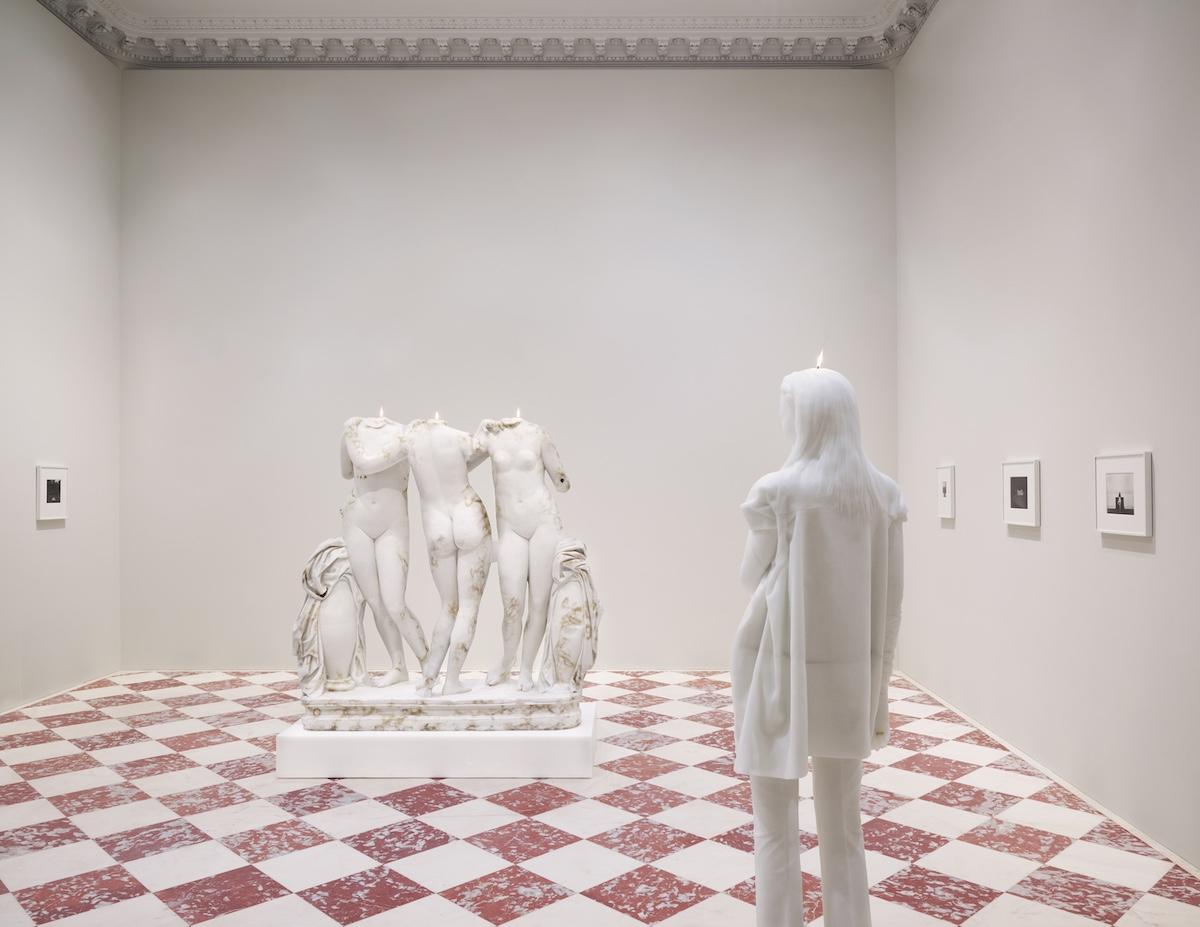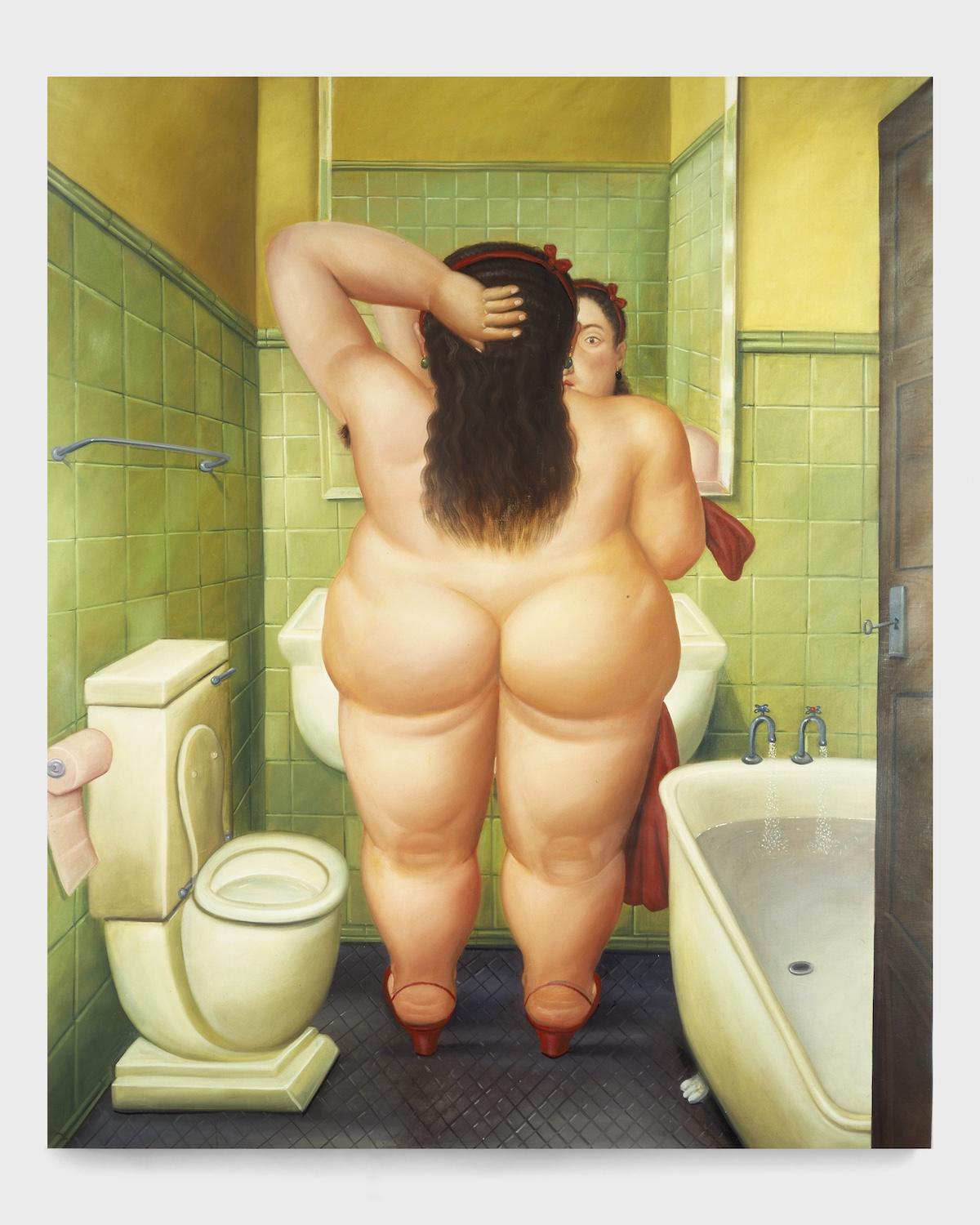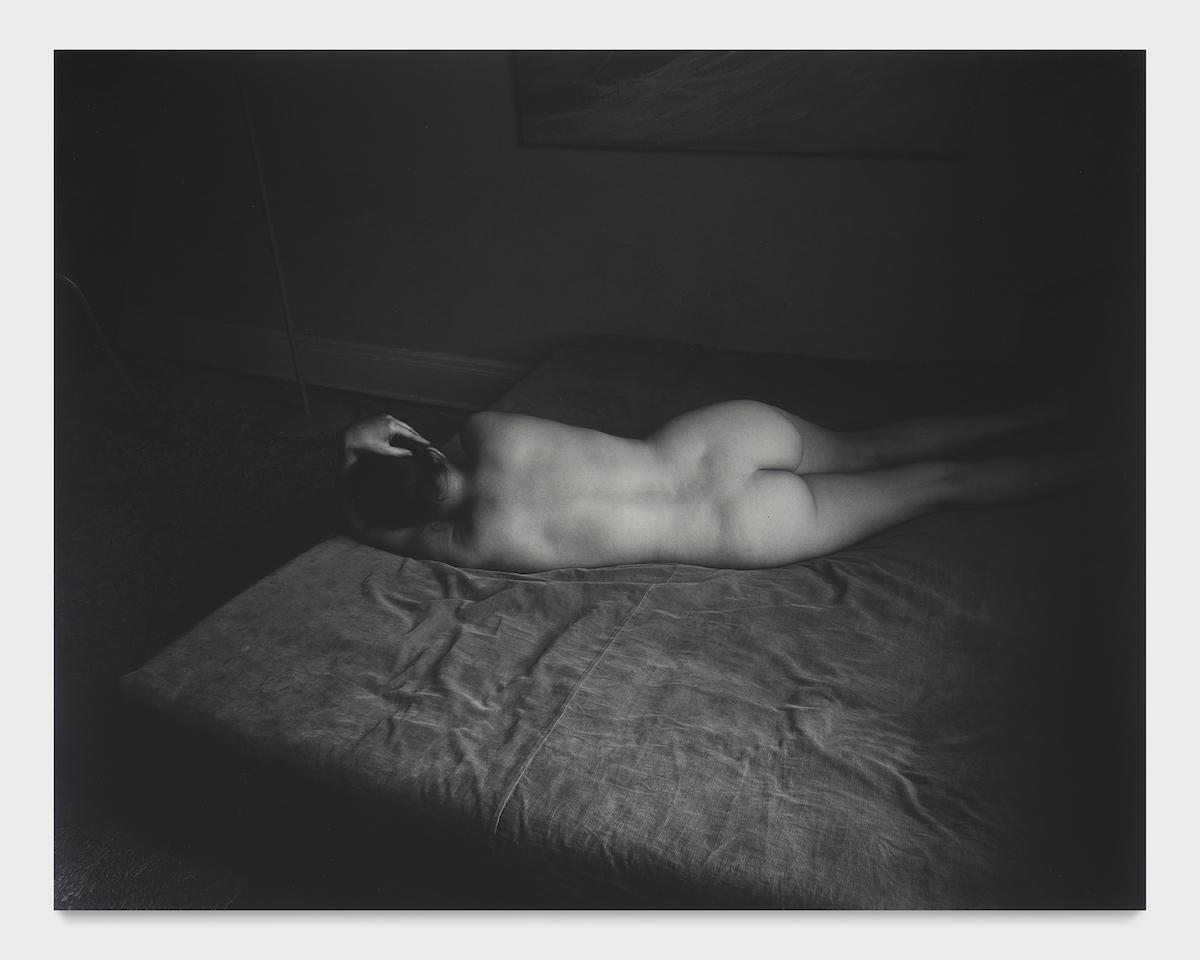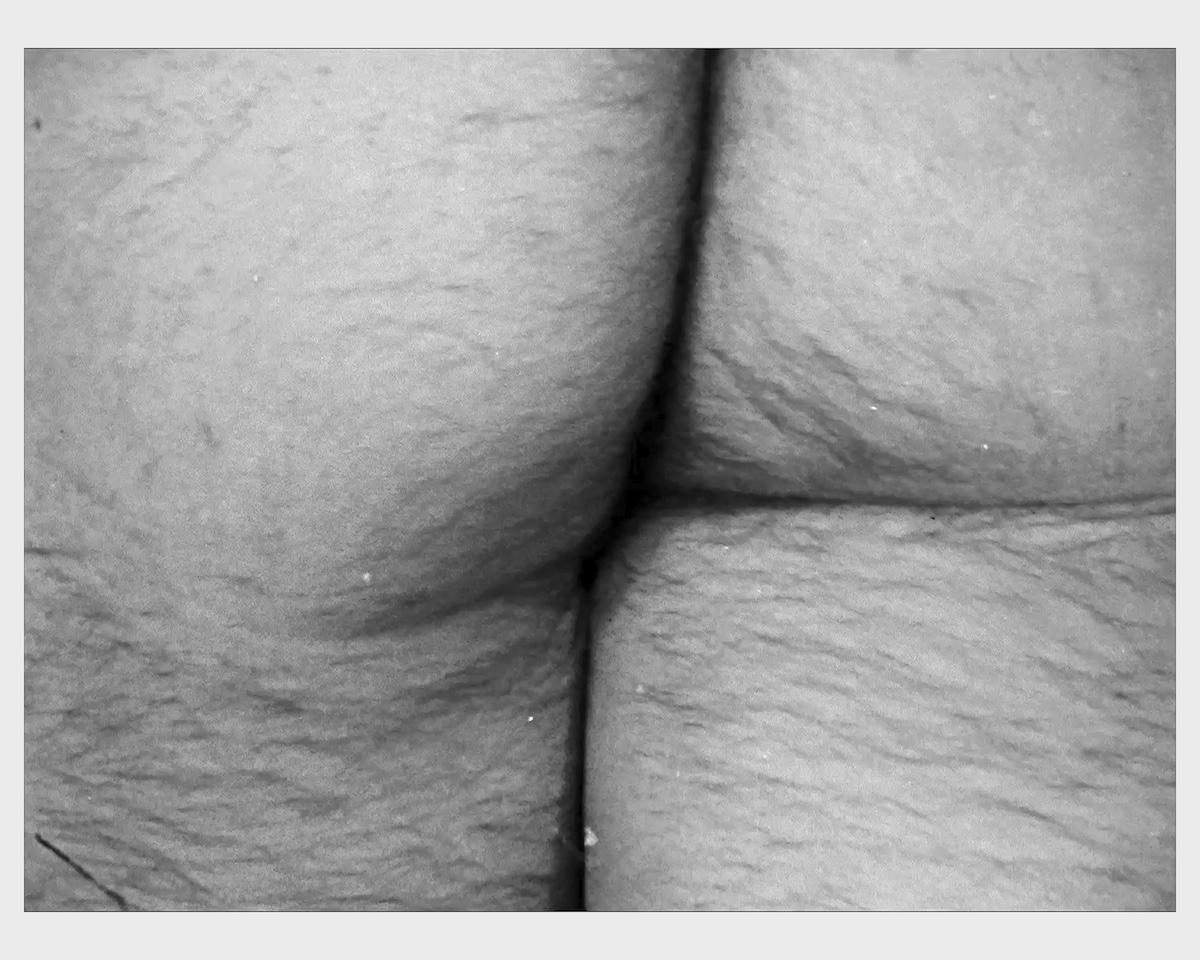The next two floors are disarming not only because they reveal so many barebacks and backsides but also because they show how we should be looking seriously at works we might normally dismiss, or disdain. One such work is Fernando Botero’s parodic painting The Bathroom which features a massive woman regarding herself in a mirror surrounded by a toilet, sink, and tub in all their architectural solidity. The interior’s curves echo hers, while a slice of her reflection to the right shows her slyly capturing us spying.
Meanwhile, ingeniously confounding our view of this formidable figure is the placement of Aristide Maillol’s 1911 black bronze sculpture standing in front of the Botero. This sculpture is of a shapely woman who dominates our gaze and all the space around her. She offers a contrasting architecture to Botero’s caryatid, one that makes you want to apologize for blocking her gaze each time you pass in front of her. To her left is a flat black figure in a painting by Barclay L. Hendricks, providing an example of negative space as the image seems to dissolve into the canvas. On the opposite wall is a dimpled conception of modernism in Félix Valloton’s Étude de fesses, (buttocks) ca. 1884—realistically highlighting the model’s stretched and discolored flesh.
































